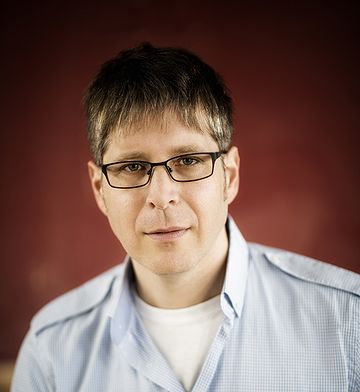Are you a journalist? Please sign up here for our press releases
Subscribe to our monthly newsletter:

NK: Before there was life on earth, molecules already displayed behavior that resembles life. Dr. Omer Markovitch tries to understand that behavior using predictive computer models.
OM: How did life originate on earth? That is far too big a question to investigate all at once. The transition from non-life to life is not black and white, but a multi-step process.
NK: You can approach the origins of life in many different ways. Where did you start?
First, I should explain where I did not begin. A common approach is to begin with life as we know it today – for example, a simple bacterium – and simplify it. That gives you a very simple ‘minimal’ cell, but it’s still much too large and too complicated to have arisen spontaneously.
At the other end, some start with single molecules that we know existed on the young Earth, before there was life. They’re still important building blocks for life. Then you try to figure out how the first primitive living cell might have been formed from those building blocks. But then you run the risk of tunnel-vision, because you assume that the molecules that are important now were also the foundation for the very first life. You immediately rule out other possible explanations.
NK: So what approach are you left with?
OM: I’m not trying to figure out the entire process from non-life to life. Instead, I’m concentrating on two steps in that process: reproduction and evolution. They are both essential characteristics of life; I want to understand how these processes work on a molecular level, and how these abilities arose. But I don’t focus on specific molecules. For me, it’s all about chemical evolution: What does evolution mean at the molecular level?
NK: Does that resemble evolution as we know it from biology?
OM: Yes, I think so. I try to apply principles from evolutionary biology to chemical systems. Chemistry and biology are not separate worlds; we are all part of the same reality, so I think the same rules apply.
NK: Can you discuss the behaviour of molecules in general terms? Even small differences between molecules can lead to completely different chemical behaviour.
OM: The principles I’m looking for are related to the underlying relationships and interactions between molecules that together form a network. The way they react to each other – and especially the extent of those interactions – influences the behaviour of the entire system. I compare it to a living cell, in which an incredible number of reactions occur simultaneously, but some go very quickly at a certain moment, causing them to trigger or slow down other reactions. It’s a synchronised whole. I’m looking for the emergent behaviour of a network – what properties a system needs in order to display specific behaviour.
NK: What does your research look like in practice?
OM: I’m mainly building and refining computer models that mimic chemical systems. I’m fortunate to collaborate with Sijbren Otto’s research group here in Groningen, so I can use real data from their experiments in my work. Those researchers have created a system of chemical replicators that spontaneously form larger rings. The rings then accumulate into something like small fibres that, in turn, exhibit interesting behaviour. That system is the starting point for my models. I then combine it with insights from evolutionary biology to search for the circumstances necessary to initiate chemical evolution.
NK: Can you give an example of a principle from biology that you use?
OM: Speciation is a good example. Evolutionary biology teaches us that the availability and variety of food is an important driving force behind specialisation and speciation. If there is only one food source, the species that can consume that food the fastest and best will become dominant. But if there is a great variety of food, various species will likely develop because there is more room for specialisation and less competition for a single food source. Think of Darwin’s famous finches with the differently shaped beaks.
NK: How do you translate that to the molecular level?
OM: You offer various building blocks that can all form rings and fibres – also in combination with each other – but that have different reaction speeds. The replicator that responds and consumes the fastest will initially become dominant, but what happens if it runs out of the preferred building block? Will it adapt or will another replicator take over, one that may grow more slowly but is less picky and can work with various building blocks? By continuously adjusting characteristics and conditions, I hope to discover the most decisive factors that allow (molecular) speciation to occur… There is a continual exchange between the experiments in the lab and the results from my models, which I can use to improve my estimates and choices again and again.
NK: What do you ultimately hope to learn from your models?
OM: My ultimate goal is to discover the universal rules of evolution.
My project will run for another two years. I hope to learn, for instance, how to choose the right conditions in a system with ten replicators that will ultimately lead to the creation of five species, and to further develop them. If I could predict the experimental conditions needed to achieve such a result, this would be a really huge step.
Translation of ‘Chemie en biologie zijn geen gescheiden werelden’, an interview by Esther Thole from the NEMO Kennislink website (https://www.nemokennislink.nl/publicaties/chemie-en-biologie-zijn-geen-gescheiden-werelden/). Translated by Erin Goedhart-Stallings (www.stallings.nl). This translation is licenced under CC.BY-NC-ND 4.0.